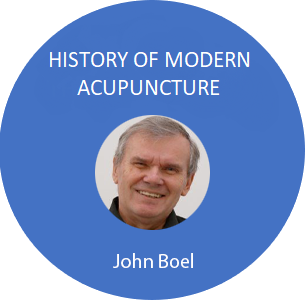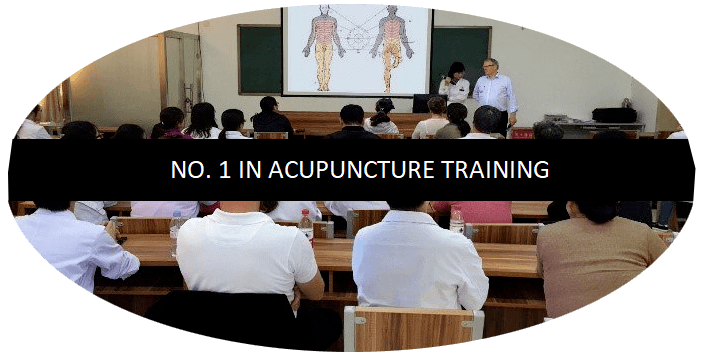6 – AcuSpine
The 6th method of Modern Acupuncture according to Boel
AcuSpine is particularly suitable for the treatment of all sorts of and impossible diseases on and around the spine, such as: In lumbar pain, sciatica, herniated disc, spinal stenosis, whiplash, back rheumatism and scoliosis.
Because of the special technique used by an AcuSpine specialist, the method is exceptionally effective for treating diseases without diagnosis or where the diagnosis is uncertain.
AcuSpine is partly inspired by AcuNova and partly by Chinese acupuncture.
AcuSpine – as the name suggests, the main points are also on the spine or on the DU meridian, as it is called in Chinese.
This is where the comparison to the inspiration of Chinese acupuncture comes to an end, because many more points, a special diagnostic method and a very dynamic lancing method are used.
The technique requires a rethinking and has never been seen before in other acupuncture methods.
The spine goes from the neck to the coccyx. Well protected from the spine, the central nervous system with the nerve origin lies to all vital parts of the body. And that is precisely the phenomenon that makes up the mechanism of action of AcuSpine.
Three different methods for locating the points are used:
A method for the neck points (a)
A method for the points from the neck to the lumbar region (b)
A method for locating points from the lumbar region downwards
(a) The points in the neck can be found by applying a light pressure on both sides of the neck muscles. When treated in the neck, the muscles on each side are tight.
(b) The points from the neck to the lumbar area are found by a technique that I developed many years ago.
The first patient to whom I used this technique was Madonna. No, it was not the singer Madonna, it was a trotting horse, which was located about 5 kilometers away from me, with Hilda and Niels Erik. Madonna had constipation and was abandoned by the vet. The animal was rescued using the Acupuncture AcuSpine – or rather the precursor version of AcuSpine.
I found three points on the spine and inserted needles. After five treatments, the horse was completely healed.
I found the dots by sliding two fingers along Madonna’s spine and felt that there were three different points where the fingers encountered weak resistance and moved like a small “s”. Right there I put the needles, and it proved to be the solution for Madonna. Since then, the technique has been refined so that one can easily find treatment points on the thoracic spine, ie between the cervical vertebrae and the lumbar vertebrae.
The students learn in the AcuSpine training:
It is noteworthy that three small needles in the spine were able to cope with a small problem that veterinary science had given up. We also treated a riding horse and a dog with the same good results. Some of our students have treated many horses. The treatment of animals also documents that the effect is not based on belief.
As one of our students, who used to be a farmer, said, “A horse does not think it is coming.” In this context, it may be worth noting that a horse does not kick forward, but backwards, whereas a cow kicks forward.
Many colleagues took great pleasure in applying the points on the spine after they were on an AcuNova training. Imagine the results you can achieve, as the AcuSpine effect is up to four times greater than using only the vertebral points (the DU meridian).
The lower points on the spine – the lumbar vertebrae and the sacral vertebrae – are found using a search tool.
The points on the spine are, as I said, about a quarter compared to AcuSpine treatment.
Apart from the points on the spine, there are points to a hand’s breadth away. The needles on the spine remain seated for 10 to 30 minutes, while the other points are treated only for a short time. For this a modern treatment technique is used.
It sounds very complicated, but once you’ve learned this technique in an apprenticeship and tried it several times under supervision, it’s pretty easy to do.
As mentioned, the nerves have a connection from the central nervous system to all parts of the body.
One can detect with the help of the fingers or with search instruments, where an imbalance is and where the nerve supply does not function optimally, and thus with AcuSpine a kind of “diagnosis” place.
Of course we do not make a medical diagnosis with AcuSpine.
As you have probably already realized, we do not need a medical diagnosis when using AcuSPine. We do not necessarily know what the patient’s problems are.
Here’s one of the strengths of AcuSpine.
We locate the points to be treated on the spine with the above method. We place the needles at these points and after that we treat the points that lie horizontally to these points. This is done with the method used in AcuSpine training.
As an inspiration and as part of the mechanism of action of the DU meridian, we examine exactly what it is. We draw on several thousand years of experience.
The DU meridian begins between the anus and the tip of the coccyx. From here, its trail goes up the spine, where it follows the spine to the nape. Here he has connection with the brain. The meridian continues, along the midline of the neck, the top of the head, the forehead, the nose and ending in the upper jaw.
The symptom pathology of the DU meridian
The symptoms of DU meridian imbalance are characterized by movements that cause pain and chills in the lumbar, back, and knee.
According to the work of Zhen Jiu Da Cheng, the DU meridians control symptoms that occur in the head, face, neck, and shoulder, and the following symptoms can be treated:
Cramps, spasms or shaking of the arms and legs
fevers
epilepsy
Headache with swollen watery eyes (age-man-eyes)
Pain in the knee or thigh that radiates to the loins or back.
Neck and shoulder tension
Cold flu
Gums, teeth and swollen neck
Paralysis and / or deafness symptoms in arms and legs, e.g. Sclerosis.
Pain in the anus and intestines
night sweats
These 11 symptoms can – with excellent results – be treated with AcuSPine.
Specialties
Spinal symptoms and symptoms such as lower back pain, sciatica, herniated disc, spinal stenosis, whiplash and arthritis of the spine and scoliosis.
Organic diseases
AcuSpine also includes a complete “diagnostic procedure” so that the acupuncturist knows which areas he / she needs to treat. Colloquially, it is called the “Madonna Method”.


